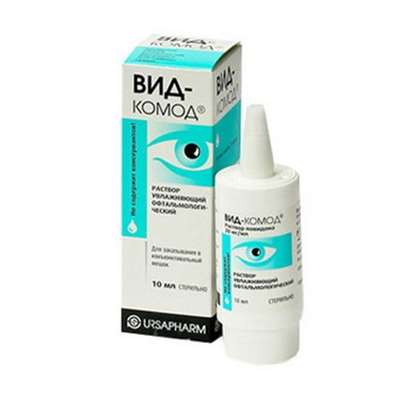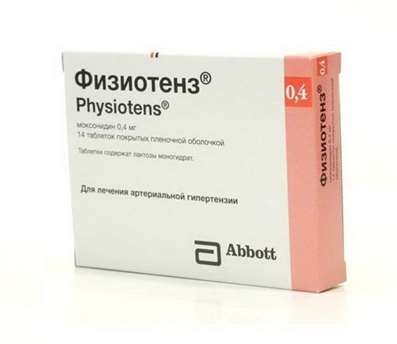Instruction for use: Humulin NPH
I want this, give me price
Active substance: Insulin-isophan [human biosynthetic]
ATX Code A10AC01 Human insulin
Pharmacological group
Hypoglycemic agent - insulin of average duration of action [Insulins]
Nosological classification (ICD-10)
E10 Insulin-dependent diabetes mellitus
Decompensation of carbohydrate metabolism, Diabetes mellitus, Diabetes insulin sugar, Diabetes mellitus type 1, Diabetic ketoacidosis, Insulin-dependent diabetes, Insulin-dependent diabetes mellitus, Coma hyperosmolar non-ketoacidotic, Labile form of diabetes mellitus, Violation of carbohydrate metabolism, Type 1 diabetes mellitus, Type I diabetes mellitus, Insulin-dependent diabetes mellitus, Type 1 diabetes mellitus
O24 Diabetes mellitus during pregnancy
Pregnancy in diabetes mellitus, Diabetes mellitus type 2 in pregnant women
Composition
Suspension for subcutaneous administration 1 ml
active substance:
Human insulin 100 IU
Auxiliary substances: metacresol 1.6 mg; Phenol - 0.65 mg; Glycerol (glycerol) - 16 mg; Protamine sulfate - 0.348 mg; Sodium hydrogen phosphate heptahydrate - 3.78 mg; Zinc oxide - q.s. To obtain zinc ions no more than 40 μg; 10% hydrochloric acid solution - q.s. To a pH of 6.9-7.8; 10% sodium hydroxide solution - q.s. To a pH of 6.9-7.8; Water for injection - up to 1 ml
pharmachologic effect
Pharmacological action - hypoglycemic.
Dosing and Administration
Subcutaneously, in the area of the shoulder, hips, buttocks or abdomen. It is allowed in / m (intramuscular) administration.
The dose of Humulin ® NPH is determined by the doctor individually, depending on the concentration of glucose in the blood. In / in (intravenously) the administration of the drug Humulin ® NPH is contraindicated.
The temperature of the drug should be at room temperature. The injection sites need to be alternated so that the same place is used no more often than once a month. When subcutaneously (subcutaneously) the introduction of insulin should be careful not to get into the blood vessel. After injection, do not massage the injection site.
Patients should be trained in the proper use of the insulin delivery device. Mode of insulin administration is individual.
Preparation for introduction
For the drug Humulin ® NPH in vials. Immediately before use, Humulin NPH flasks must be rolled several times between the palms until complete resuspension of insulin until it becomes a homogeneous cloudy liquid or milk. Do not shake vigorously. This can lead to the appearance of foam, which may interfere with the correct dose set. Do not use insulin if there are flakes after mixing or to the bottom or walls of the vial solid white particles adhere, creating the effect of a frosty pattern. Use an insulin syringe that matches the concentration of insulin administered.
For the drug Humulin ® NPH in cartridges. Immediately before use, Humulin® NPH cartridges should be rolled between the palms 10 times and shaken, turning 180 degrees also 10 times until complete resuspension of insulin until it becomes a homogeneous cloudy liquid or milk. Do not shake vigorously. This can lead to the appearance of foam, which may interfere with the correct dose set. Inside each cartridge there is a small glass ball, which facilitates the mixing of insulin. Do not use insulin if there are flakes after mixing. The device of cartridges does not allow to mix their contents with other insulins directly in the cartridge. Cartridges are not intended to be refilled. Before the injection, it is necessary to read the manufacturer's instructions for the use of a syringe-pen for the introduction of insulin.
For the drug Humulin ® NPH in the syringe handle QuickPen ™. Before the injection, it is necessary to read the manual for the use of the QuickKenny ™ syringe pen.
Manual for the use of the QuickKenny pen syringe
The QUIKPEN ™ pen syringe is easy to use. It is a device for the introduction of insulin (an insulin syringe pen) containing 3 ml (300 units) of insulin preparation with an activity of 100 IU / ml. You can inject from 1 to 60 units of insulin per injection. You can set the dose to within one unit. If too many units are installed, you can correct the dose without losing insulin. The QUIKPEN ™ syringe handle is recommended for use with needles from Becton, Dickinson and Company (BD) for pen syringes. Before using the syringe pen, make sure that the needle is fully attached to the syringe handle.
The following rules should be followed in the future.
1. Observe the rules of asepsis and antiseptics, recommended by the attending physician.
2. Wash your hands.
3. Choose a site for injection.
4. Wipe the skin at the injection site.
5. Place the injection sites in such a way that the same place is used no more often than once a month.
Preparation of the QuickKenny ™ syringe pen and introduction
1. Pull the cap of the syringe handle to remove it. Do not rotate the cap. Do not remove the label from the syringe handle. Make sure that insulin is inspected for type of insulin; Expiration date; appearance. Carefully roll the syringe pen 10 times between the palms and turn the syringe handle 10 times.
2. Take a new needle. Remove the paper sticker from the outer needle cap. Use a tampon moistened with alcohol to wipe the rubber disc on the end of the cartridge holder. Put the needle in the cap directly on the axis on the syringe handle. Screw the needle until it is fully attached.
3. Remove the outer cap from the needle. Do not throw it away. Remove the inner needle cap and discard it.
4. Check the QUIKPEN ™ syringe pen for insulin. Each time, you should check your insulin intake. Checking the intake of insulin from the syringe-pen should be performed before each injection before the emergence of a trickle of insulin to make sure that the syringe pen is ready for the dose.
If you do not check the insulin intake before the trickle, you can get too little or too much insulin.
5. Fix the skin by pulling it or putting it in a large crease. Introduce the needle sc, using the technique of performing the injection, recommended by the attending physician. Put your thumb on the dose button and firmly press until it stops. For the introduction of a full dose, keep the dose button and slowly count to 5.
6. Remove the needle and gently squeeze the injection site with a cotton swab for a few seconds. Do not rub the injection site. If insulin drips from the needle, it is likely that the patient did not hold the needle under the skin long enough. The presence of a drop of insulin at the tip of the needle - this is normal, it will not affect the dose.
7. Using the protective cap of the needle, unscrew the needle and dispose of it.
Even numbers are printed in the dose indicator window in the form of numbers, odd numbers are in the form of straight lines between even numbers.
If the dose required for administration is greater than the number of units remaining in the cartridge, you can enter the remaining amount of insulin in that syringe pen and then use a new pen to complete the required dose, or enter the entire required dose using a new syringe pen.
Do not try to inject insulin by turning the dose button. The patient will not receive insulin if the dose button is rotated. It is necessary to press the button of introduction of a dose on a direct axis, in order to receive a dose of insulin.
Do not try to change the dose of insulin during the injection.
Note. The syringe pen will not allow the patient to set a dose of insulin that exceeds the number of units left in the syringe pen. If there is no certainty that a full dose is administered, you should not enter another one. Read and follow the instructions in the instructions for use. It is necessary to check the label on the syringe pen before each injection to make sure that the drug has not expired and the patient uses the correct type of insulin; Do not remove the label from the syringe pen.
The color of the dose input button of the QuickKenny ™ syringe pen corresponds to the color of the strip on the label of the pen syringe and depends on the type of insulin. In this manual, the dose button is grayed out. The beige hull color of the QuickKenny ™ pen syringe indicates that it is intended for use with the Humulin® products.
Storage and disposal
The syringe pen can not be used if it is outside the refrigerator for more time specified in the instructions for use.
Do not store a syringe pen with a needle attached to it. If the needle is left attached, insulin can leak out of the pen syringe, or insulin may dry up inside the needle, causing clogging of the needle, or air bubbles may form inside the cartridge.
Syringe pens that are not in use should be stored in the refrigerator at a temperature of 2 to 8 ° C. Do not use a syringe pen if it has been frozen.
The currently used syringe pen should be stored at room temperature in a place out of the reach of heat and light, out of the reach of children.
Dispose of used needles in pierce-resistant, closed containers (for example, in containers for biohazardous substances or waste), or as recommended by your doctor.
It is necessary to remove the needle after each injection.
Dispose used used syringes without needles attached to them in accordance with the recommendations of the doctor in accordance with local requirements for the disposal of medical waste.
Do not recycle the filled container for sharp objects.
Form of issue
Suspension for subcutaneous administration, 100 IU / ml. For 10 ml of the drug in neutral glass vials. On 1 fl. Put in a pack of cardboard.
3 ml in neutral glass cartridges. 5 cartridges are placed in a blister. To 1 bl. Placed in a pack of cardboard or cartridge embedded in the pen-handle QuickPen ™. On 5 syringes-handles place in a pack a cardboard.
Terms of leave from pharmacies
On prescription.
Storage conditions
At a temperature of 2-8 ° C (do not freeze). Protect from direct sunlight and heat.
Keep out of the reach of children.
Shelf life
3 years. After the start of use - no more than 28 days (at a temperature of 15-25 ° C).
Do not use after the expiry date printed on the package.

 Cart
Cart





